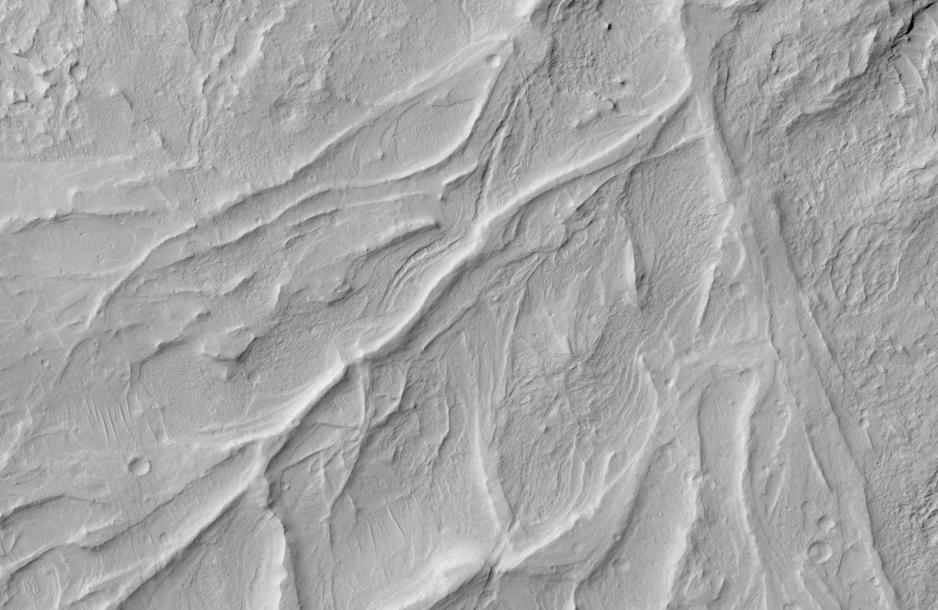
Billions of years ago, rivers flowed across the surface of Mars, shaping fluvial landforms visible to this day. These landforms, preserved by Mars’ relative lack of tectonic activity, contain a wealth of information about how, and for how long, liquid water flowed on the surface of Mars. While water can act to erode rock, forming features such as valley networks that have been mapped previously on Mars, it can also transport and deposit sediment. When this sediment collects at the bottom of a river channel, it can solidify into rock that is more durable than that of the surrounding channel. Over billions of years, erosion removes the rock surrounding the channel leaving the former river channel exposed as an “inverted,” positive-relief ridge.
A study by Jay Dickson at Caltech and colleagues has produced a global map of these inverted channels, providing for the first time a systematic study of net-depositional fluvial networks on Mars. The eight-trillion-pixel map was produced using data from the NASA Context Camera (CTX) aboard the Mars Reconnaissance Orbiter spacecraft. The team found that fluvial ridges were likely related to known erosional fluvial activity on Mars. Ridges were found downstream from higher-energy erosional features, consistent with river systems on Earth. Most were found in the exceptionally flat and well-preserved southern hemisphere within approximately 3-billion-year-old Noachian and Late Hesperian units that coincided with the end of erosional fluvial activity on Mars.
These inverted channels, like fluvial depositional environments on Earth, hold a wealth of information on the environment and history of Mars’ water and geologic history. The global context provided by this new map will help researchers interpret a crucial time in the evolution of Mars from a water-rich, potentially habitable planet to the cold, dry planet of today. READ MORE